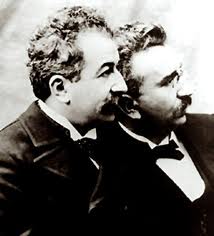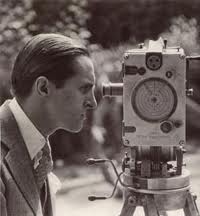France is the birthplace of cinema and by heck are they proud of that.
Ever since the fateful day in 1895 when the Lumière brothers projected a flickering image on to a wall of the Grand Café in Paris, cinema has become a national passion.
Far from the glitzy, big budget blockbusters that are churned out by Hollywood, France has always prided itself into turning film making into an art form, not just a cash cow.

The most famous French film movement, dubbed the Nouvelle Vague, was a reaction to the soul-less Hollywood movies that were dominating the film scene in the 1950's. They measured the success of a film, not on how much money it grossed, but on how effectively the director's message or vision was conveyed to the viewer.
This philosophy has been continued by French film makers ever since and so today, the French films that have received the most critical acclaim, such as Amélie (2001) or La Vie en Rose (2008), maintain a distinct style that sets them apart from the rest.
Four firms dominated in the early days of film, but the First World War had a devastating effect on the industry. France, along with most other European countries, suffered insufficient capital and French people's appetite for cinema was understandably diminished.

In the 1920’s things started to get back on track for French cinema and several young, avant-garde film directors decided they had something to say.
These young directors, such as Rene Clair and Jean Renoir, wanted to experiment with film as an artistic medium.
In 1939 France once again found itself in the center of a world war, which destroyed much of its infrastructure and shook its economy to the very core. The French film industry suffered a heavy setback and hardly developed at all until the late 50s.
This time it was a different, yet equally as innovative group of young French film makers who changed the face of cinema.
A film journal named Les Cahiers du Cinema was set up in 1951 and unknowingly the nouvelle vague crashed against the shores of French cinema.
The Nouvelle Vague or New Wave was the name quickly given to the generation of film critics that wrote for Cahiers and then turned their hands to directing. François Truffaut’s Les Quatre Cent Coups (400 Blows) and Jean Luc Godard’s A Bout de Souffle (Breathless), both debut features, still stand as totems of the movement.
What united this rather discordant French film makers was a deep belief that the film maker had to have complete artistic integrity. According to their believe a director was an artist and therefore needed complete artistic license of his creation, the studios or producers had therefore no right to interfere.
They promoted the concept of the director as auteur (author) of the film and this led to a series of low budget films being produced that were far removed from the expensive sets and big stars of contemporary Hollywood. French sex symbol Brigitte Bardot was discovered in one of these films in 1956.